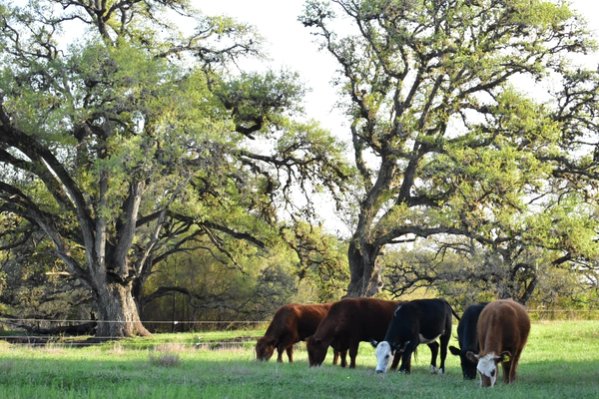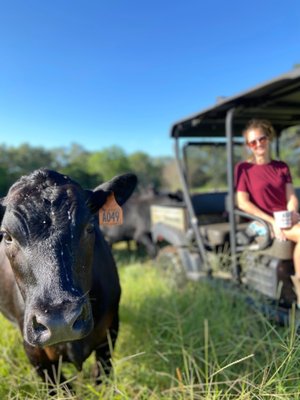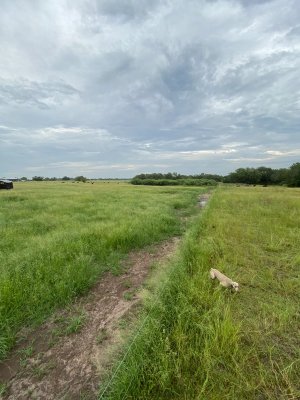Before grassfed beef became popular and so sought after, it was a much simpler landscape for producers and consumers alike - grassfed beef was, well, beef that was raised on grass their entire life, fed only grass; hence "grassfed beef". Simple right? Not so much. In the past decade, defining "Grassfed Beef" has gotten so complicated that the USDA Agriculture Marketing Service (AMS) changed things up a few years ago, and decided to quit regulating it altogether. The USDA AMS originally regulated the grassfed label and the requirements producers needed to follow to sell grassfed beef. However, about five years ago they claimed that the "AMS does not have the authority to define labeling standards and determine if marketing claims are truthful and not misleading. Therefore, it is inappropriate for the agency to offer these as AMS-defined marketing claims."

After the AMS's decision, another federal agency - the USDA's Federal Safety and Inspection Service (FSIS) picked up the slack. Currently, they are "sorta" responsible for regulating the grassfed beef industry. What I mean by "sorta", is that when they took over, the FSIS dropped the inspection/enforcement standards that were previously in place; now they just require a signed affidavit by the producer, relying on their word that they're raising animals on grass their whole lives. No inspection, no follow ups, nothing. Sign a piece of paper, and voilå, you're in the grassfed beef business. If you're thinking "what the heck is the USDA AMS and FSIS?", don't fret. Here are their mission statements, taken from their respective websites (spoiler alert: one has to do with regulating marketing - ahem, label claims; the other with food safety). The USDA "AMS facilitates the strategic marketing of agricultural products in domestic and international markets while ensuring fair trading practices and promoting a competitive and efficient marketplace." Based on that, it sounds pretty logical for them to regulate what is or isn't considered grassfed beef.

Yet the organization that now regulates it (the FSIS) is responsible for: "enhancing public health and well-being by protecting the public from food-borne illness and ensuring that the nation's meat, poultry and egg products are safe, wholesome, and correctly packaged."

FSIS has an incredibly important job, ensuring meat and eggs are safe to consume. But defining what "grassfed" beef is... ?? We aren't talking a steak garnished with fancy lettuce - we are talking about the way these cattle are raised their entire life. Protecting the public is making sure meat is correctly packaged and labeled with regard to health precautions - i.e., allergen information, safe cooking instructions, artificial ingredients, etc. This is NOT the same as regulating labeling for marketing programs such as grassfed or pasture raised meat. Since it is not in their wheelhouse of expertise, it's no wonder that they've determined a simple sworn statement will suffice.


This mentality and the lack of ownership has led to an explosion of "greenwashed" products in the marketplace. If you've been hearing the term "greenwashing" more in the last few years, but are unsure of what it means - this is a perfect example of it. "Greenwashing is the process of conveying a false impression or providing misleading information about how a company's products are more environmentally sound. Greenwashing is considered an unsubstantiated claim to deceive consumers into believing that a company's products are environmentally friendly." https://www.investopedia.com/terms/g/greenwashing.asp And unfortunately, Grassfed Greenwashing is in full swing in 2021.
Greenwashing allows big companies that see big margins in the "natural" space to hide behind pretty packaging and/or marketing materials (keep in mind marketing materials, the colors/pictures on meat packaging, websites, social platforms etc aren't regulated), without actually changing their operations. This ultimately deceives the customer and pushes the other smaller, legit producers/businesses out of the market - a dirty side of capitalism. So where does this leave the consumer that is searching for legit 100% grassfed and finished beef? With no federal inspection process in place to substantiate a grassfed label claim, sadly it leaves the burden of proof on you. Fortunately, there are many, many legitimate options of producers/businesses that are truly invested in raising the best grassfed beef for the health of the animal, the consumer, and the planet.
Greenwashing allows big companies that see big margins in the "natural" space to hide behind pretty packaging and/or marketing materials (keep in mind marketing materials, the colors/pictures on meat packaging, websites, social platforms etc aren't regulated), without actually changing their operations. This ultimately deceives the customer and pushes the other smaller, legit producers/businesses out of the market - a dirty side of capitalism. So where does this leave the consumer that is searching for legit 100% grassfed and finished beef? With no federal inspection process in place to substantiate a grassfed label claim, sadly it leaves the burden of proof on you. Fortunately, there are many, many legitimate options of producers/businesses that are truly invested in raising the best grassfed beef for the health of the animal, the consumer, and the planet.

If you have made the decision to feed you and your family grassfed and finished beef but don't know where to look, the good news is it is easier and more convenient than ever to find it –
1. Never trust a label claim solely on a meat package
2. Beware of targeted Facebook/Google Ads - typically (but not always) they can be from a big company with deep pockets dumping thousands, if not millions into ads. Do further research and talk directly to the producer that raises the meat. A customer service rep in a corporate office doesn't count
3. Visit your local farmer's market
4. Find a local farmer (many ship!) using the website www.eatwild.com 5. Many farms (like ours, 1915 Farm) share our practices, life, standards, every single day on social media.
At 1915 Farm we do this so you can see how your meat is raised on the daily - creating the ultimate transparency. That's all for now folks, until we "meat" again :) –– Catherine
Source: https://www.usda.gov/media/blog/2016/01/20/understanding-ams-withdrawal-two-voluntary-marketing-claim-standards

Leave a comment